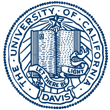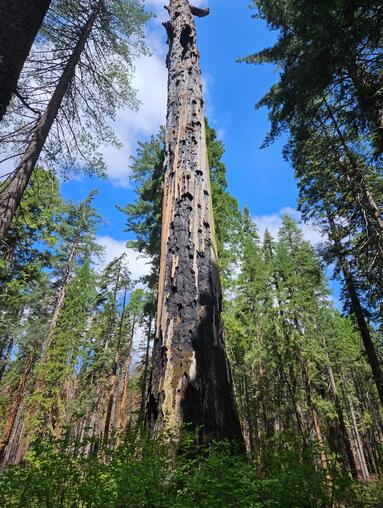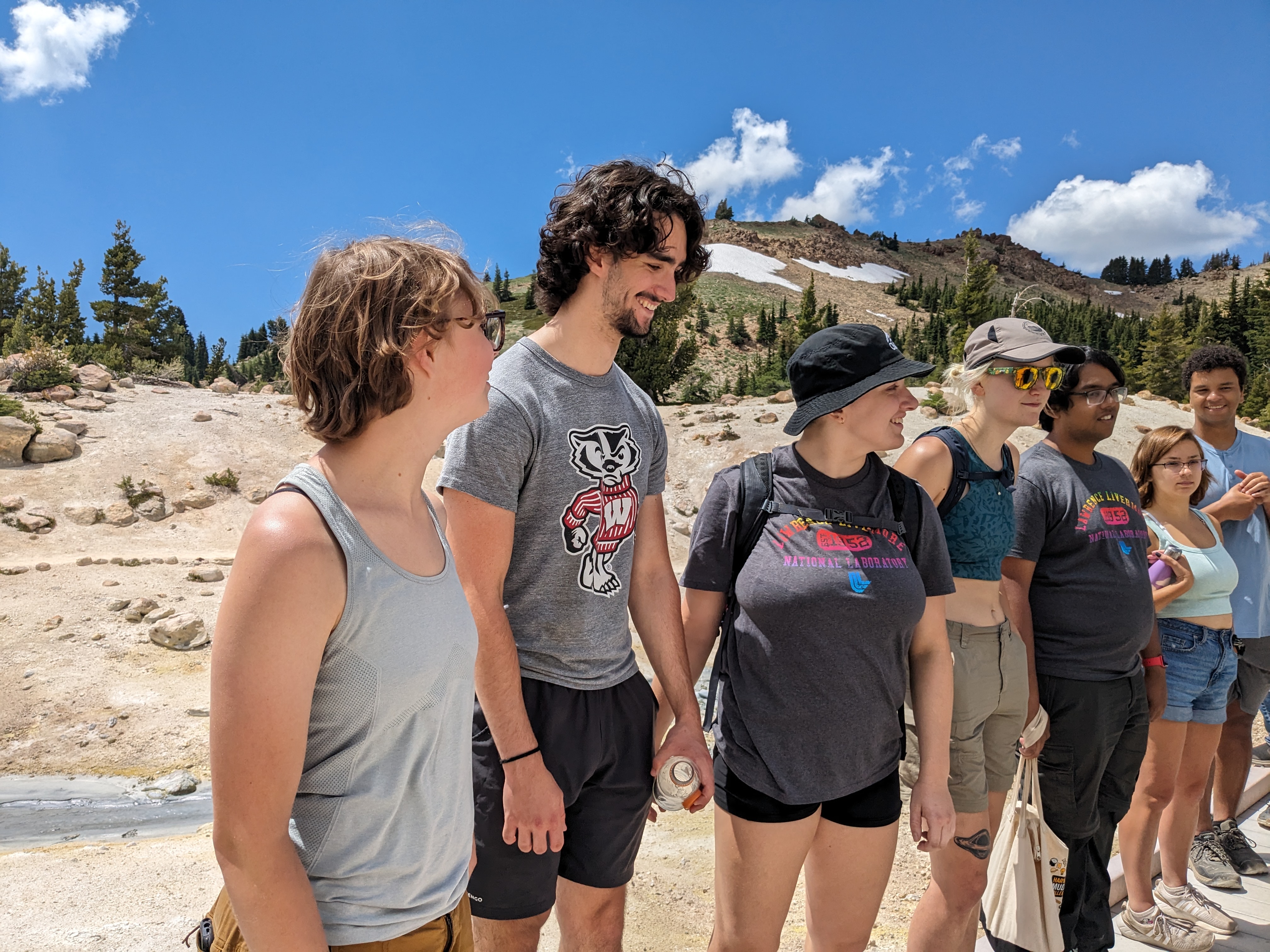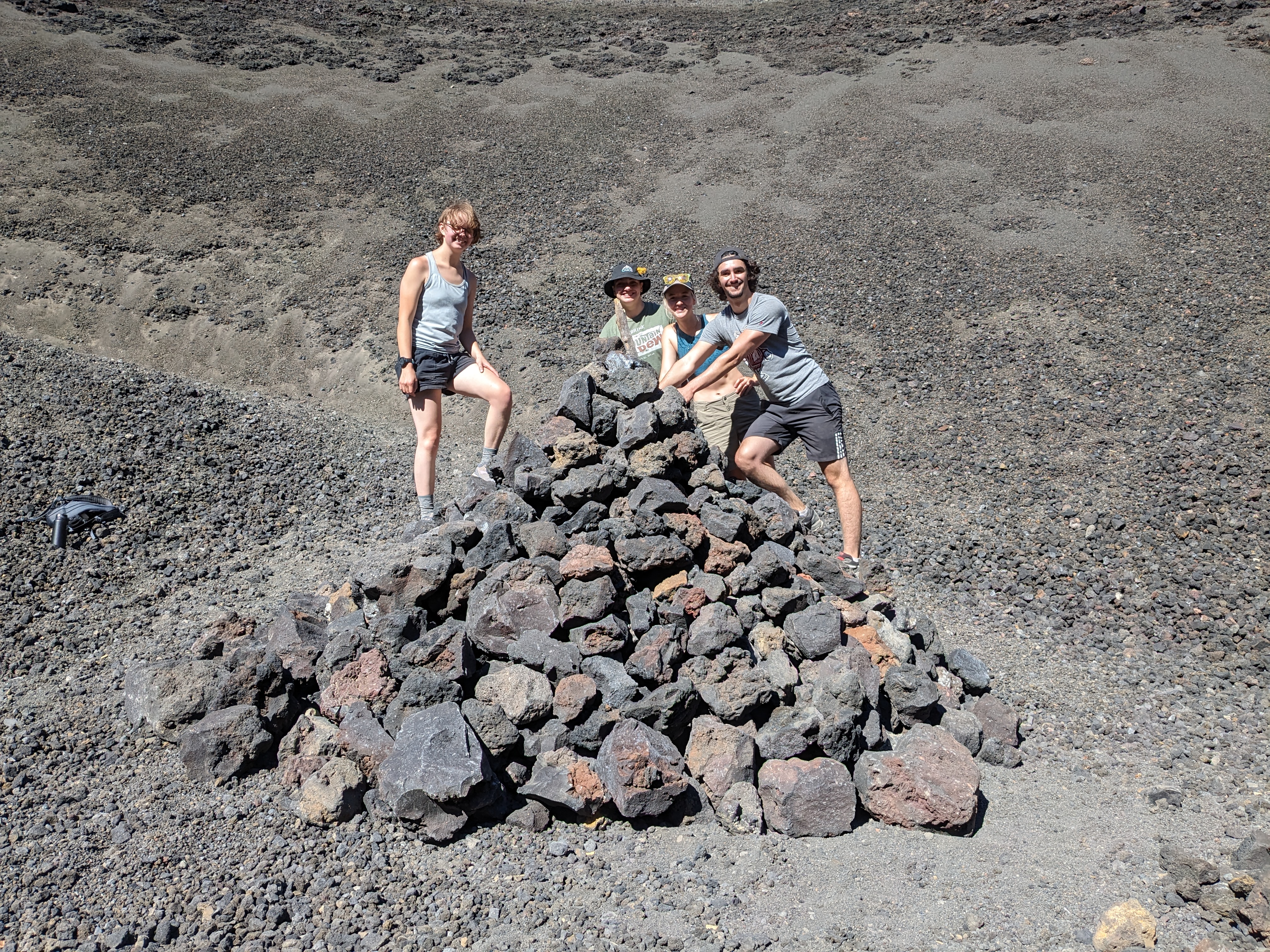
This REU program was funded through NSF PHY-2150515.
Calaveras Big Trees State Park
The story of Calaveras is that a hunter pursuing a bear came upon
in incredibly large tree. Sadly, he returned to chop it down. In fact
a one-mile hiking loop in the northern part of the park has a collection
of trees destroyed by humans. The original tree wound up with its stump
as a dance floor and its trunk hollowed out into bowling lanes. Another
was stripped of its bark. The bark was sent east and reconstructed, in
an attempt to convince skeptics that these mammoth trees were real.
Since key nutrients are carried through the bark, this was a death sentence
for the tree, although it still stands (below left). A third tree had a tunnel carved
in it people or cars could go through. The tunnel destabilized it enough that
it collapsed in a 2017 storm. Despite the havoc humans have wreaked on the
1000-year-old trees, we saw many that remain standing in all their
majesty. The Palace Tree (below right) is the second-largest in the park
and a popular spot for group photos.


Lick Observatory
Our private tour of Lick Observatory had a bit of everything. We heard about the science still being done on the observatory's many telescopes. Some were once among the largest in the world, and some are large enough to remain useful mid-sized telescopes. Unlike larger telescopes, they can be used for measurements that require observations over a long time window of a month or more. We had views of sunset over the south end of the San Francisco Bay, followed by hot chocolate and a history lesson on James Lick, who donated money, land, and his name to the observatory. It was then dark enough for a viewing through the huge refracting telescope.
McClellan Nuclear Research Center
McClellan Nuclear Research Center in Sacramento has the two largest bays in the world for irradiating objects from a nuclear reactor. It was built on a now-closed air force base and used as a non-destructive method of imaging airplane wings to search for damage. The scope of the work at McClellan expanded after the air force base closed and UC Davis took over its management. A significant effort now is scans of parts that will be launched into space, from NASA efforts to private satellites. A defect in a metal part could be catastrophic, and even if a defect is unlikely, the expense of a launch makes worthwhile to do a careful search for possible problems.
Lawrence Livermore National Laboratory
Livermore Lab hosts the National Ignition Facility (NIF). Lasers tightly focused on a small sample create a plasma that undergoes fusion. Despite the small size of the target, the entire setup is immense, with 192 lasers shooting in from different directions. Last December, NIF reached "breakeven," where the fusion reaction produced more energy than was delivered to the target from the lasers. However, the output remains about a factor of 100 smaller than the energy needed to power all the lasers, so at a practical level we are not about to see a shift to fusion energy!
Lassen Volcanic National Park
Scheduling constraints meant that we left for Lassen the morning after the trip to Livermore. One of those constraints was waiting until enough snow had melted that we could get to the spots we'd like. As the image below shows, there were still some large snow patches in early August. The students are looking at hydrothermal features, although the only one in the photo is the strange gray stream behind them, visible at the left.


